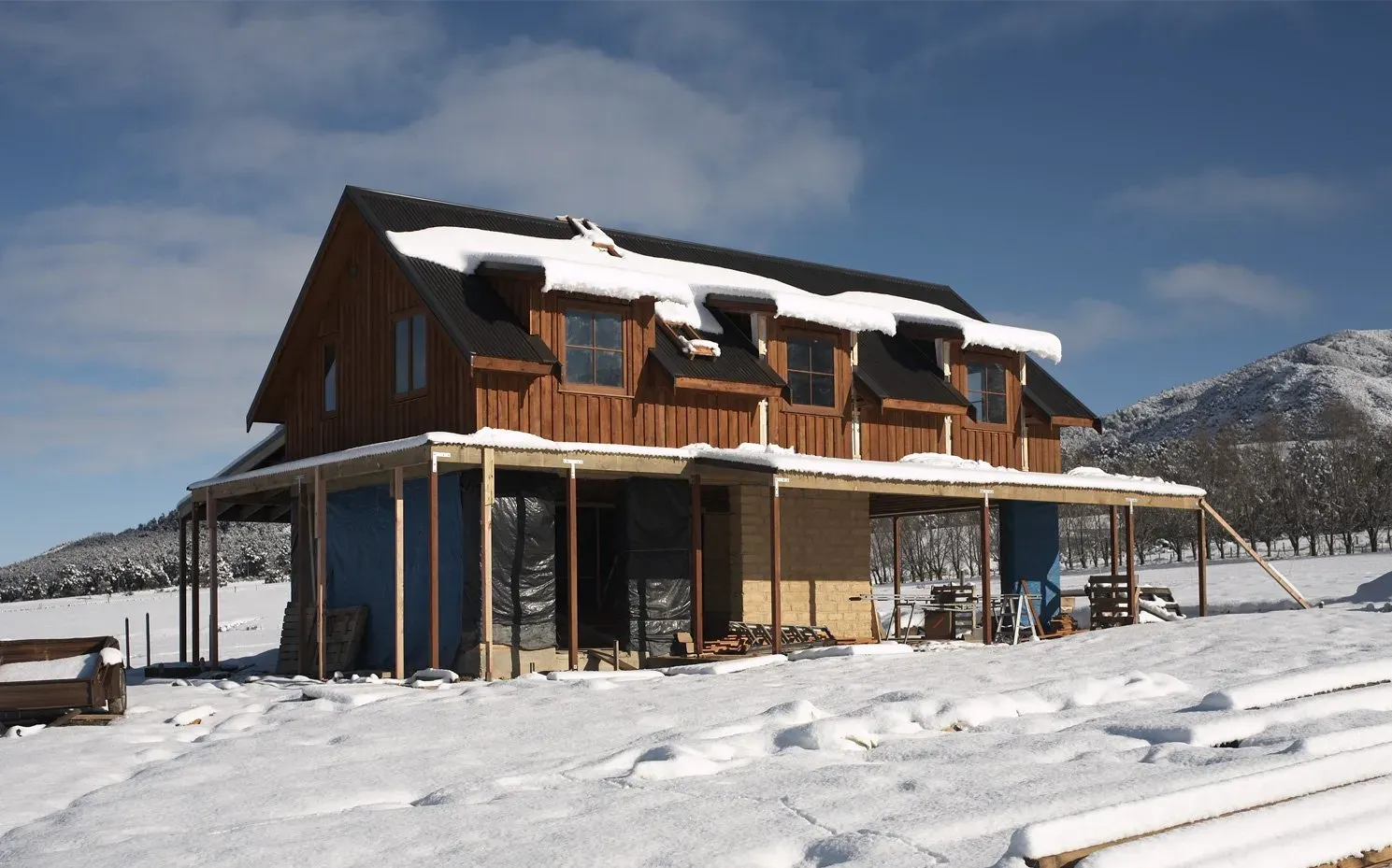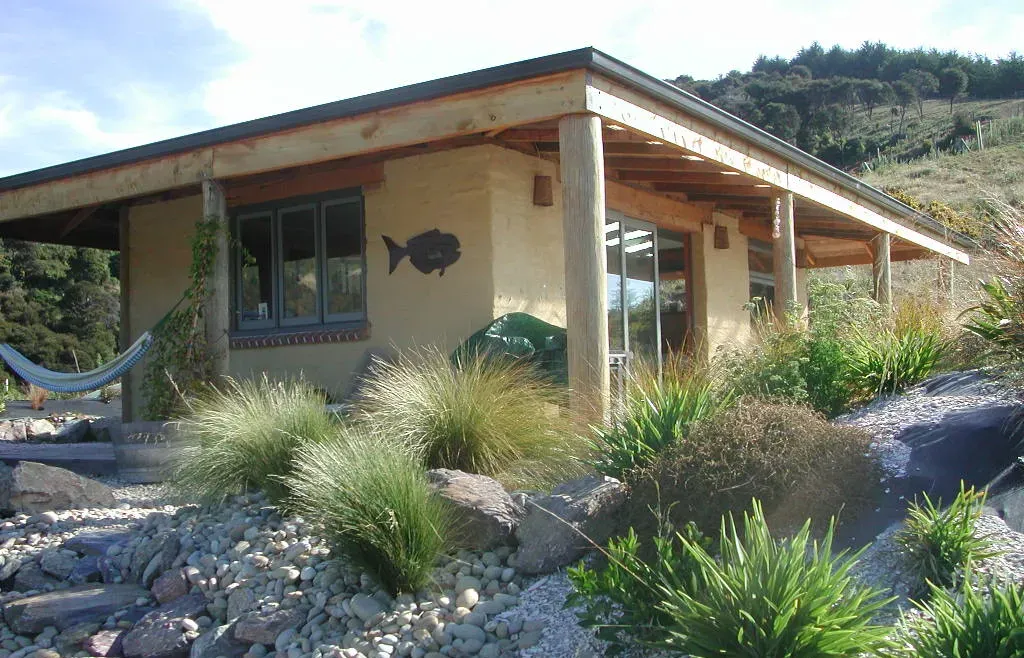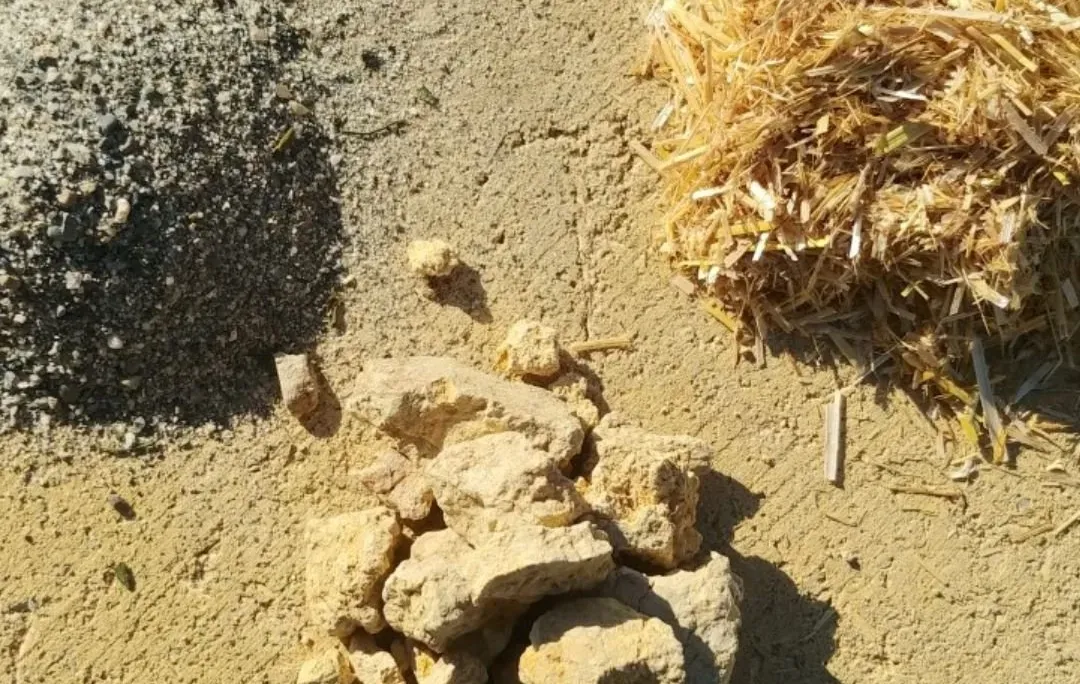Locally-Sourced Materials in Retrofitting: A Sustainability Guide
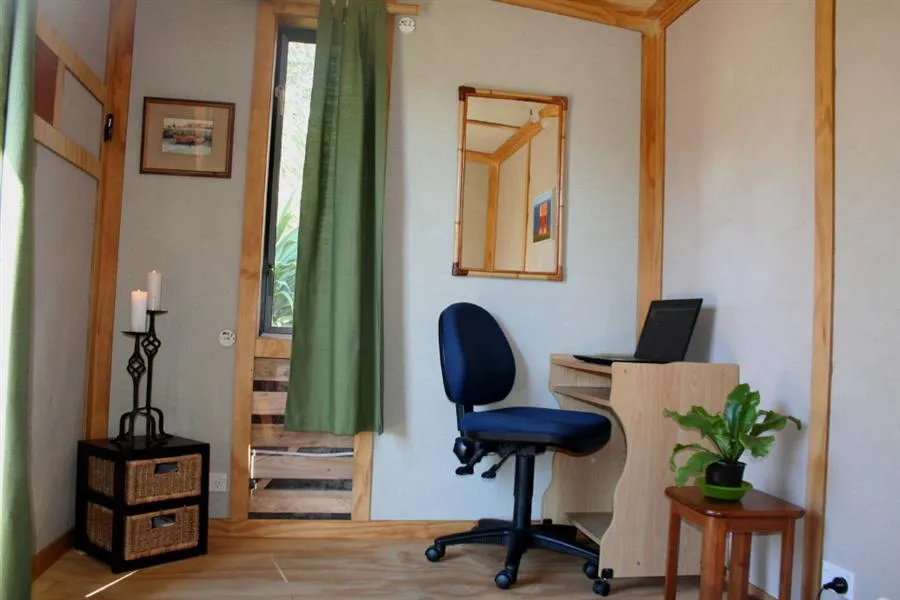
Improving the performance of our existing building stock is incredibly important. New construction only replaces or adds a few percent per year at most to the world's existing stock of buildings. Many of us cannot afford or don't want to build new, and even in rental situations, there is a lot of scope and need for upgrades. Existing buildings can often be improved at far lower cost - both financially and environmentally - than would be required to raze and replace them.
When we talk about giving buildings a new lease on life, there's a secret ingredient that's often overlooked: locally sourced materials. These are the hidden gems that not only add character to a retrofitting project but also bring a host of benefits that extend well beyond the walls of your home or office.
Imagine walking into a space that's been transformed using materials with a story, materials that didn't have to travel halfway around the world to find their place. That's the power of local sourcing – it's about creating connections, reducing impact, and building with a conscience.
Revitalizing Structures with Local Treasures
Let's face it, retrofitting isn't just about energy efficiency or modern aesthetics; it's about crafting a narrative for your space. By choosing locally sourced materials, you're not just upgrading your surroundings, you're investing in the community and the environment, and setting a standard for what building renovation should look like in a world that's increasingly conscious of its ecological footprint.
Key Takeaways
- Locally sourced materials reduce environmental impact and support community businesses.
- Using local materials can add unique character and a sense of place to retrofitting projects.
- Scouting for local materials involves research, networking, and a bit of creativity.
- Opting for local resources can lead to economic, societal, and environmental benefits.
- Every retrofitting project has the potential to tell a story through its use of local materials.
The Wonders of Locally-Sourced Materials
There's a certain magic to materials that have been sourced from your own backyard. They come with a lower carbon footprint, thanks to reduced transportation distances and lower embodied energy. They often embody the local culture and history, making your space truly one-of-a-kind. And let's not forget, they tend to support the local economy, keeping the money within the community and fostering relationships with local artisans and suppliers.
Step-by-Step: Scouting for Local Gems
Finding the right local materials for your retrofitting project can be like a treasure hunt. Start by mapping out local suppliers and visiting them to get a feel for what's available. Network with local craftspeople and builders – they're often a goldmine of information on where to find the best materials. And don't be afraid to think outside the box; sometimes the most unique materials come from unexpected places like reclaimed wood from old barns, earth from your back yard, or stones from a nearby quarry.
Material Matters: Why Local Sources Lead
Choosing local materials isn't just a feel-good story; it's a strategic move. It means less energy spent on transportation, which translates to lower emissions. It means materials that are better adapted to the local climate and conditions. And it means a finished product that resonates with the local landscape and heritage, giving a sense of place that can't be replicated with materials from afar that are mass-produced.
From Global to Local: Redirecting the Material Pipeline
The shift from global to local is about more than just materials; it's about rethinking the entire supply chain. It's about building relationships with local producers and understanding the lifecycle of materials from extraction or harvest to installation to disposal. This approach not only reduces the ecological impact but also creates a more resilient and responsive supply chain.
The Triple Bottom Line: Economy, Society, Environment
Embracing locally sourced materials isn't just good for the planet; it's good for people and profits too. This is the essence of the triple bottom line:
- Economy: Local sourcing supports regional businesses and keeps money circulating within the community.
- Society: It fosters a sense of pride and connection, as people see their local resources showcased in beautiful, functional ways.
- Environment: It minimizes transportation emissions, reduces waste, and often makes use of materials that are more naturally suited to the local climate.
By focusing on these three interconnected areas, retrofitting with locally sourced materials becomes a holistic approach to building that benefits everyone involved. And that's a story worth telling.
Unearthing the Benefits: Sustainability and Beyond
When we dig into the practice of using locally sourced materials for retrofitting, we uncover a world of benefits that extend far beyond the immediate impact on our precious planet. It's a holistic approach that touches every facet of the community and the environment, creating ripples of positive change that can be felt for generations.
Eco-Friendly Footprints: A Smaller Carbon Trail
Choosing local materials slashes the carbon footprint of your building project dramatically. They save a huge amount of transportation emissions, and often have lower embodied energy, because either they are recycled, or they are renewable and abundant resources that are minimally processed, or even waste materials.
Examples: Earth from plasters can be sourced where there are local earth works; wood shavings or straw are biobased waste products, salvaged timber is recycled rather than dumped.
Social Sparks: Empowering Local Communities
But it's not just about the environment. Using local materials ignites a spark within the community. It creates jobs, supports local businesses, and builds a network of people invested in the success of the project. There's a shared sense of pride when a building reflects the identity and craftsmanship of the place it stands in.
Cost Considerations: Long-Term Savings Unlocked
And let's talk numbers. While the upfront cost of some local materials might seem higher, the long-term savings can be substantial. Reduced transportation costs, lower maintenance expenses, energy savings and the longevity of locally sourced materials all can contribute to a healthier bottom line over time.
Building Blocks: Choosing Your Local Materials
So, how do you start selecting the right local materials for your project? It begins with understanding what's available around you and matching those resources to the needs of your retrofit. It's about striking a balance between aesthetics, function, and sustainability.
Get to Know Your Local Goodies: A Primer
Start by researching local suppliers and getting to know the materials they offer. Get a feel for materials, see them in use, and ask questions. Learn about the origins of the materials, how they're processed, and what makes them suitable for your project. This isn't just shopping; it's about forming a connection with the building blocks of your project.
Brick by Brick: Recycled Materials in Your Area
Recycling isn't just for paper and plastics. Buildings, too, can be a source of recycled treasures. Old bricks can bring a rustic charm, reclaimed wood can add warmth and history, and repurposed metal can give a modern industrial feel. These materials aren't just reused; they're given a new story in your hands.
Natural Neighbors: Local Timbers and Earth
Embracing materials from your local environment does more than just reduce carbon emissions; it connects your project to the landscape it inhabits. Local timbers are not only sustainable but they also carry the essence of the area, providing strength and beauty. Similarly, earth-based materials like adobe or earthen plaster walls are not just eco-friendly, they're also incredibly efficient at regulating indoor temperatures and humidity. Plus, they blend seamlessly into the natural surroundings, making your building look like it was born from the land itself.
Integration Station: Incorporating Local Resources
Incorporating local materials into your retrofitting project is like weaving a tapestry with threads from your own backyard. It's about finding harmony between new additions and existing elements, ensuring that each piece complements the other. To do this effectively, you need to understand both the physical properties of the materials and the story they tell. It's a process that requires thoughtfulness and a deep respect for the materials' origins and potential.
The Art of Retrofitting: A How-to Guide
Retrofitting with local materials isn't just about swapping out old for new; it's about transformation. Start by assessing the current state of the building and envisioning the potential changes. Then, source your materials, keeping in mind both their functional and aesthetic qualities. Next, plan your approach, considering how each material will interact with the existing structure. Then, identify whether you will be doing the work yourself or if you are going to employ a local craftsperson. You might have to learn some fun new skills. And finally, execute with precision, ensuring that every new piece is integrated with care and respect for the building's history and future.
Community Craftsmanship: Engaging Local Skill
When you bring local materials into a retrofitting project, you also open the door to local talent. Skilled artisans and tradespeople bring a level of craftsmanship that's hard to find elsewhere. They understand the materials and how to work with them, often drawing on techniques passed down through generations. Engaging with these artisans not only supports the local economy but also ensures a level of detail and quality that's unmatched. Or you can go the DIY route and maybe work together with other locals who share your passion for natural retrofitting, and want to practice some skills.
Permitting Process: Navigating Local Regulations
Before you can begin retrofitting with local materials, you need to understand if the work you want to do requires a permit, and potentially navigate the permitting process. This can be daunting, but it's essential for ensuring that your project meets all local building codes and regulations. Start by consulting with local authorities to understand the requirements. They can provide guidance on what materials are permitted and any other considerations you need to be aware of. Even if no permit is required, make sure that all building work is compliant to ensure safety in use.
Case Studies: Local Success Stories
Nothing speaks louder than real-life examples of successful retrofitting projects using locally sourced materials. These case studies showcase the potential of local resources to transform spaces while respecting the environment and bolstering the community. They serve as a blueprint for what's possible and as inspiration for those looking to embark on their own sustainable retrofitting journey.
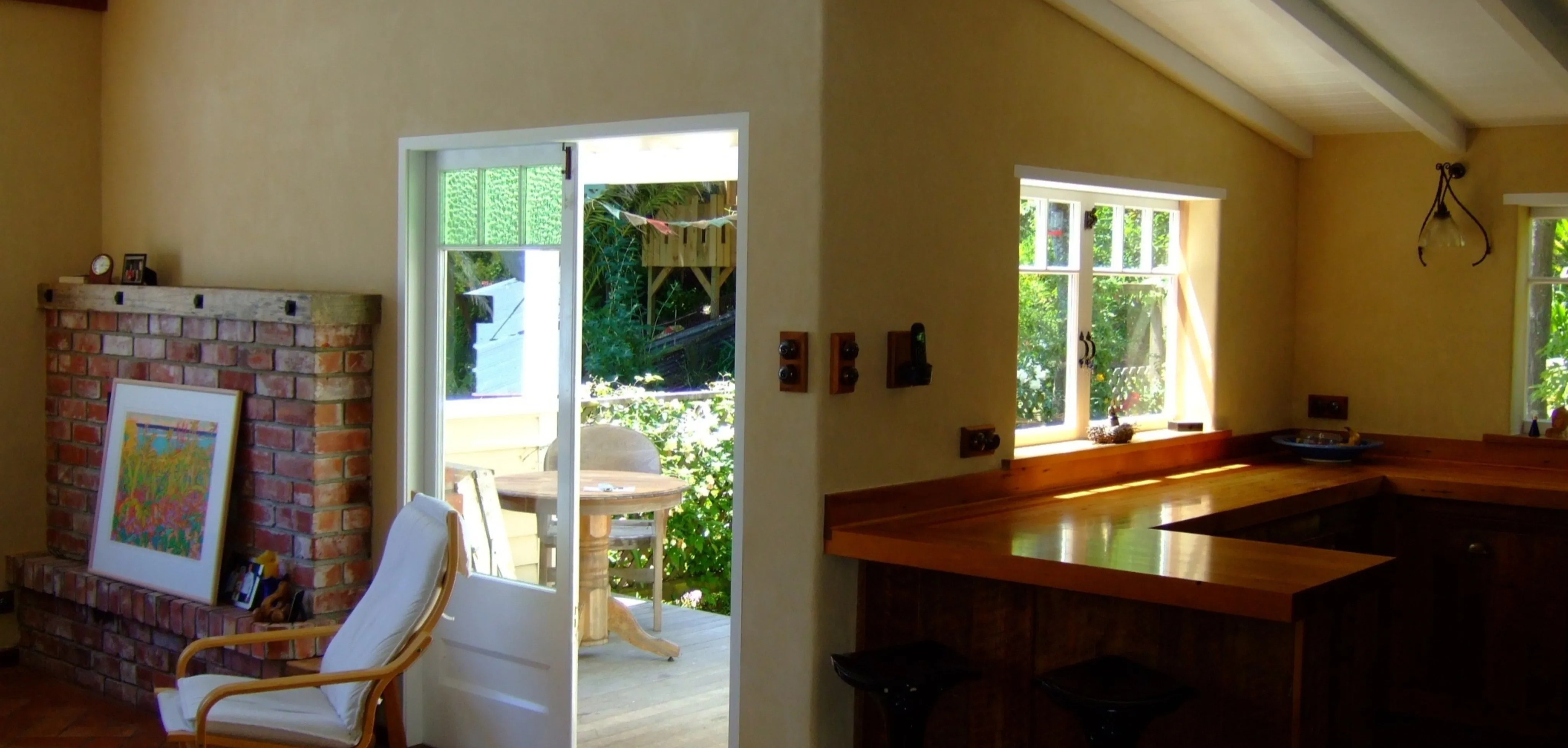
Before & After: Retrofitting with a Local Twist
Imagine a damp student flat revamped with earthen panels and Tadelakt plaster, or 100-year old stone cottage brought back to life with salvaged timber and earthen plasters. These before and after stories don't just show the aesthetic transformation; they highlight the thoughtful integration of local materials that honor the building's heritage and bring tangible improvements to the indoor spaces.
As local artisans who work with earth and lime, some of our most satisfying projects have been in retrofitting. We either carry this out for clients, or we teach them how to do it themselves. Retrofitting projects are also a great opportunity for us to run in-person workshops, as it gives participants a great sense of achievement to see a space transform.
From Blueprint to Reality: Making It Happen
Turning your vision of a sustainable, locally-sourced retrofit into a tangible reality requires a blend of planning, coordination, and action. It's about aligning your goals with the resources available to you, and charting a course that leads to a successful, eco-friendly renovation. This journey from blueprint to reality is both a challenge and an opportunity to redefine what it means to build responsibly.
Creating Your Action Plan: A Template
Here's a simple template to get you started:
- Define Your Vision: What are your goals for the retrofit? What local materials do you want to incorporate?
- Research: Identify potential local sources for materials. Visit suppliers, talk to local artisans, and gather samples.
- Assess: Evaluate the quality, availability, and cost of the materials. How do they fit into your overall design?
- Plan: Create a detailed plan that includes material selection, sourcing, and the integration process.
- Engage: Connect with local builders and craftsmen who can bring your vision to life, or who are willing to teach you how to do it yourself.
- Execute: With everything in place, begin the transformation, ensuring that you follow good practice and do things in the right order
- Reflect: After completion, take the time to reflect on the project's impact on the community and environment, lessons learned, etc and consider sharing this with other interested people.
Resource Roundup: Where to Find Local Materials
Finding local materials can be as simple as a conversation with a neighbor or contractor, and often includes researching online.
Start with local salvage yards, community bulletin boards, and local quarries and sites of earth works for leads on reclaimed items, natural materials, and local producers. Online platforms like Facebook Marketplace can also be treasure troves for local materials. Additionally, connecting with local builders and natural building associations can provide valuable insights into sustainable resources in your area.
There are many online resources that will support you on your quest. From DIY youtube videos to online trainings like our Earth Building Academy, which has a strong focus on retrofitting with natural materials and which includes mentorship tailored to your specific needs.
FAQs: All About Locally-Sourced Materials in Retrofitting
What exactly are locally-sourced materials?
Locally-sourced materials are those that are harvested, produced, or recovered within a certain radius of your project site. This distance can vary, but typically it's within a few hundred miles. The idea is to minimize the environmental impact associated with transporting materials over long distances, while also supporting the local economy.
Why should I choose locally-sourced materials over others?
Opting for locally-sourced materials in your retrofitting project has a multitude of benefits. It reduces your carbon footprint, supports local businesses, and often results in a building that is better adapted to its environment. Furthermore, these materials can provide a unique aesthetic that reflects the local heritage and culture, making your space truly one-of-a-kind.
How do I find local materials suitable for my retrofitting project?
Discovering the right local materials for your project is a blend of research and community engagement. Start by tapping into local networks – think farmers' markets, craft fairs, and local construction forums. These are hotspots for information on where to find the best local materials. Don't overlook the value of social media groups and online marketplaces; they're often brimming with listings for reclaimed materials and local suppliers.
Can I save money by using locally-sourced materials?
Yes, you can often save money by going local, but it's not just about the upfront costs. Consider the full lifecycle of the materials – local options may have a higher initial price tag, but they often come with lower transportation costs and a longer lifespan. Depending on the materials you retrofit, you can also expect to reduce the energy consumption of your building. Plus, by investing in local materials, you're building relationships that can lead to discounts and deals down the line.
What are some common challenges with using local materials and how can I overcome them?
One challenge is availability – not all materials may be readily available locally. To overcome this, plan ahead and be flexible with your design to accommodate what's available. Another challenge is the potential lack of certification or standardized quality for certain local materials. Address this by working with reputable local suppliers who can provide references or examples of their materials in use. Lastly, local regulations may limit the use of certain materials. To navigate this, engage with local building authorities early in the process to understand what's permitted and adjust your plans accordingly.
Keen to learn more about retrofitting with natural materials? We have an online mini-workshop you can access for free.



